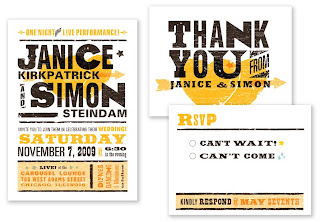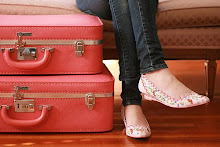Installing your own cabinets can be a challenge if you level the traditional way with shims and do not have a
laser level. It would also really suck if you didn't have someone who had some clue what to do. Luckily we had such a person in a one Papa Dish who happens to own a laser level and who also brought us the most wonderful invention since the bucket or the hyde scraper . . .
EZ levelers.
The EZ Leveling system is something I had never heard of that Papa Dish found randomly on the magical world of the internet. It is truly amazing! I will never put another cabinet in without them. Especially in an old haus with uneven flooring. The extra beauty of the system is you never see any evidence of it once the cabinets are in place and the toe kick is on. Genius! {gotta love a contractor that actually cares about the finished look} Way more expensive than shims, but totally worth it as they literally saved our kitchen. More about that later. I'll leave the explanation to the experts on the website. They do a much better job at explaining how these little guys work then I ever could.
The other amazing-wonderful-love them forever thing the same people have done is put how-to videos on
YouTube. After watching them, I swear anyone could put in cabinets. I'm proof.
Tip #1: You will want a tripod to place that lovely self-leveling laser on.
When you install cabinets you begin at the top with the upper cabinets then work your way down to the lowers. This is so the lowers aren't in your way for the upper cabinets. Makes sense. No matter if you are doing uppers or lowers, you start in the corner {if you have one} In our case we didn't have upper cabinets over our lower cabinets so our order didn't matter.


Before all this though, you want to find the lowest part of your floor {our back corner}. Following the YouTube instructions, use the laser to mark the line you will level your cabinets to. You would want to follow this step if you are using shims as well. At the same time, you want to mark where your studs are. You would think, considering the fact that we had just seen them too long ago, we would know where our studs were, but not so much. Our haus' studs where mostly 18" OC, but not always. Our trick {because the stud finder sucked} a tiny little picture frame nail. Tapping it in to see where your studs are is cheaper than a stud finder anyway {if you do it below your level line, no one will ever see the holes you put all over your new walls} Next, if you are doing it our way you need to put the EZ Levels in the base of your cabinets.
Tip #2: The screws that come with the system to attach the levelers to your base cabinets are a wee bit short. Some of our levelers came off while adjusting their height. Not cool and unnecessarily stressful. Unless they've changed this since we ordered our set, replace the screws with longer guys and save yourself some heartache.
Steve drilling the holes for the EZ Levels
Placing said EZ Level
You will also want to use a
stain marker, that matches your wood most closely, on the edges of your cabinets. All wood shrinks and expands, and whether or not the cabinets ever do shrink you would see a nice white line where they meet without doing this. Plus, you're going to want a marker anyway to fix the occasional nick and scratch that all kitchens acquire.
Now you'll want to put your cabinets in place. With the system we used, you connect the cabinets together first {just in the front!}, then place them against the wall, then level them to your laser line. I don't know how it works with shims, look that up on some other blog. :P Once your cabinets are level, you can completely connect the cabinets together using shims. You can also shim them in the back following the line you marked at the stud and screw them into the wall. Again, this is all explained more clearly on the videos.
Tip #3: This is on the videos as well, but when you screw the front of your cabinets together, do this right above or below the screw where the hinge attaches. This way, they are hidden once the doors are on. Seriously, I love this guy!
Unfortunately we didn't take any photos of us installing the pantry section. This was probably the most difficult to do as far as phasing goes. We have a panel that encloses our refrigerator, upper cabinets above the fridge, a pantry beside that, and a little low cabinet between the fridge and the window. All of these things needed to fit just so, so we didn't have any gaps. We started with the low cabinet because this was in the corner. Then we put the panel up temporarily to mark where the uppers began. After the upper cabinets were installed we put in the pantry. The line on the wall next to the pantry is where trim around a door will go. Yay! Everything fits!

Well . . . almost everything. Do you see the fan where a cabinet should be in the picture above? Yup, that cabinet didn't fit. We made one of the easiest and dumbest mistakes you can when ordering our casework. {I blame the Menard's guy} We didn't leave any space for a filler panel against the wall. No walls are ever perfectly square. I don't care if you have a new haus. They aren't. Luckily we were not too far off from making it work so we were able to plane both sides of the cabinet and the one next to it down rather than ordering new. When I say "we" I mean Kevin with
ShadowBrook came and planed down our cabinets. Kevin also cut down our enclosing panel to be flush with the face of the upper cabinets. Kevin is very talented, but good luck trying to get him. He owns a farm and a creamery. He's a busy guy.

Oh, yeah, I almost forgot. After all that, the cabinet still wasn't flush to the face of the corner cabinet when we put it in place. The reason, we discovered, was a nice little bump on the wall. We're not sure what happened here, if the mudder was a little over zealous, but we ended up sanding the wall down to the tape. Then after cussing and banging on the cabinet to make it go in {clamp it! clamp it!"} all was in place, flush and lovely. {PS: even after this, I still love Dallman Drywall}
This major mistake of ours was a complete pain in the tukhus but not having any filler strips makes our cabinets look like they were custom built for our kitchen. Although I absolutely love this, its not a mistake I would make again hoping it would turn out as well the second time around.










 VS
VS





















